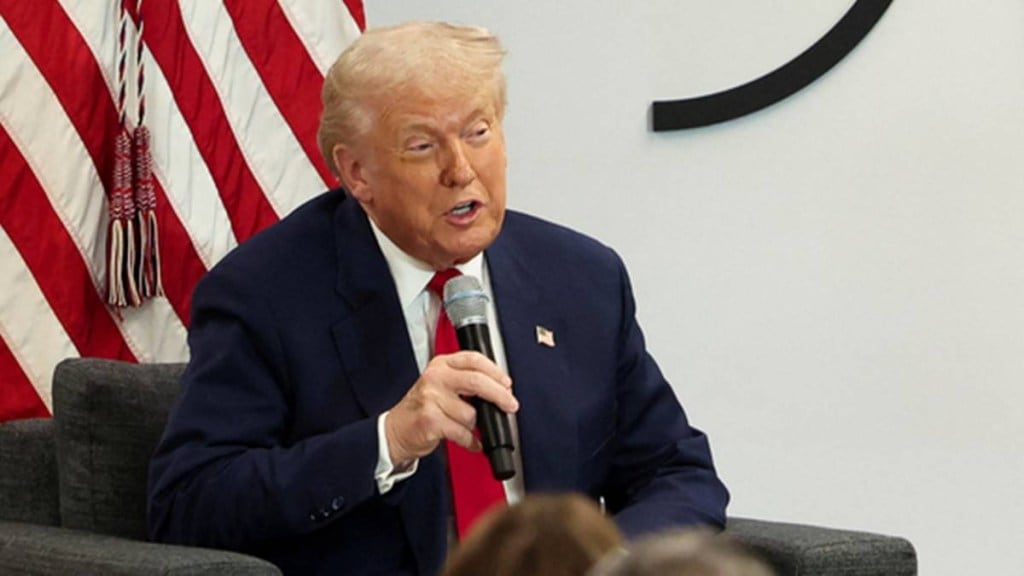Amitendu Palit, Senior research fellow and research lead (trade and economics), Institute of South Asian Studies, National University of Singapore
President Donald Trump has declared April 2 as the “Liberation Day” for American trade. This is the date on which the US is expected to announce reciprocal tariffs.What would the reciprocal tariffs be?
The general sense on reciprocal tariffs is that they will match those of partner country tariffs item by item. For example, if fresh apples imported by India from the US currently face a tariff of 50%, then apple exports from India to the US will be imposed with an identical “reciprocal” tariff of 50%.
This, however, may not be so and the actual reciprocal tariff imposed by the US might be much more than 50%. This is ostensibly because reciprocal tariffs will be based on a number of factors, out of which the partner country tariff rate is only one.What will go into the making of reciprocal tariffs can be gleaned from the first executive order that President Trump issued upon assuming office on January 20. The order promulgated the “America First Trade Policy”.
The policy highlighted the Trump administration’s intent to address the several large trade deficits that the US has built up over the years with major trade partners as a result of “unfair trade practices”. Reciprocal tariffs on various countries will aim to eliminate these unfair trade practices inimical to the interests of US businesses and citizens.
Various US government agencies were tasked by the policy to determine unfair trade practices. The broad focus in this regard has been on identifying partner country policies that include or result in: loss of tariff revenues and risks from importing contraband drugs and counterfeit products; discriminatory taxes hurting US businesses and citizens; countervailing and anti-dumping laws affecting US businesses; exchange rate policies resulting in currency manipulation.
The agencies have also been tasked to identify partner country practices that adversely affect US national security interests, especially export controls and subsidies, inhibiting prospects of the US retaining its global superiority in security technologies and innovation.
With all these factors being brought into play, it is anybody’s guess as to what the reciprocal tariffs might actually be. In many respects, therefore, it is pointless to ponder on what they actually will be. Rather, for countries at the receiving end of the tariffs, it will be more important to figure out what are the specific reasons, including the non-tariff alleged “unfair” practices that have motivated the tariffs. Understanding these reasons are crucial because much of the future economic engagement of individual countries with the US will depend on this understanding.
Intuitively, if reciprocal tariffs are determined by existing tariff levels and other unfair trade practices, then US trade partners can be broadly grouped into four categories. Those that have high tariffs and several unfair practices; those with low tariffs and several unfair practices; those with high tariffs and less unfair practices; and finally, those with low counts on both. The last group is clearly the safest and will be at the bottom of the priority list for US trade action.
The third group — high tariffs and less unfair practices — will also have its task cut out in a straightforward manner. The US expectation from this group will be confined to their policy actions on cutting tariffs. It is the other two groups that will have more problems.
Acting on unfair trade practices might turn out to be a much more difficult proposition for many countries than reducing tariffs. This is because a lot of what US agencies end up identifying as “unfair practices” would be “behind the border” domestic policies that are difficult to change. For example, Indonesia’s decision to ban sales of Apple’s iPhone16 due to non-compliance with local sourcing requirements might be considered a serious “unfair” practice.
Though the decision has been recently reversed, Indonesia might be considered a trade partner with a proclivity to impose such practices, especially given its controls of export of nickel ore, and might invite remedial action through high retaliatory tariffs. Similarly, for India, the preference enjoyed by businesses that source more locally, in government tenders, might be noted as a red flag. India has proposed to withdraw the equalisation levy of 6% on online advertisements by foreign companies, which too could have been considered a highly unfair practice.
But India continues to have a complicated goods and service tax system for a large number of products, which might influence its reciprocal tariff value.What will be of particular concern to several countries, including India, is the US agency views on exchange rate policies.
India, along with Taiwan, China, Japan, Korea, Thailand, Italy, Singapore, Malaysia, and Germany, were among countries that figured in the monitoring list of the US Treasury during Trump1.0. The ostensible purpose in this regard is to stop countries from adopting exchange rate policies, including domestic market interventions, which make the US dollar uncompetitive as a global currency for broad-based trade and financial transactions.
Indeed, currency management practices are an area that will invite US trade remedial action for several Asian large emerging markets including India: it is good to recall President Trump’s threat on imposing 100% tariffs on the BRICS group, during his election campaign, for their efforts to encourage de-dollarisation.
All in all, the quoted reciprocal tariffs will be much more than tariffs; they will actually be numbers that the US will use for extensive policy correction in partner countries. They will also be instruments for bargaining, including in prospective trade agreements, such as in the one with India.
Disclaimer: Views expressed are personal and do not reflect the official position or policy of FinancialExpress.com. Reproducing this content without permission is prohibited.
